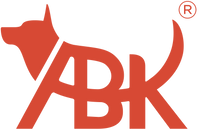Grooming an aggressive dog can be pretty challenging
Many dogs exhibit violent tendencies that can cause issues for their owners and groomers. Although nearly all wild animals are naturally violent when guarding their territory, self-defending, or protecting their progeny, it's important to handle any aggressive behavior with appropriate measures when they are adopted as pets. However, this grooming-related behavior could be the result of several things, including worry, fear, misunderstanding, or a bad grooming experience. Groomers and even pet owners need to know how to get aggressive dogs groomed.
The dog can simply try to flee, or worse, they might bite you.
So, can an aggressive dog be groomed? Of course, they can! Here are some tips for grooming aggressive dogs that you can heed to increase your chances of completing a grooming session with aggressive dogs with next to no incidents if you are unsure of how to properly groom them
Allow the dog some time to become familiar with you.
Allow the dog some time to become familiar with you. Do your best to project and exhibit composure in the interaction by giving the dog a gentle pat and speaking softly to them.
You can start brushing the dog with a grooming brush once he gets to know you. But before using the tools on the dog's entire body, let him give them a good sniff first because dogs are generally curious creatures.
Start Grooming Them at a Young Age.
When your dog is still young, you should start taking them to the groomer. This way, a lot of anxiety and tension can be avoided in the future. Puppies are open to learning new skills and socializing, and they enjoy exploring new environments. Additionally, they are less aggressive, which makes it simpler to teach them to accept regular grooming. As a result, it will be simpler to train them to behave more politely and consistently when being groomed. Even though it's not impossible, training an older dog that has had a bad grooming experience will require more effort and care.
Use Reward-Based Training
Positive reinforcement is the foundation of many effective grooming methods. Rewarding dogs for good conduct motivates them to maintain good behavior in the future. While an aggressive dog at the groomer is getting ready for its major appointment and waiting, a small treat might help. Giving them a treat before going to the groomer may also keep them calm. If they sat still during their bath and grooming, you might want to reward them with another treat.
Also, if you have already trained your dog on the "stay" command, you should be able to get your dog to stay in place easily too.
Introduce the Dog To your Grooming Tools and Techniques
Make an attempt to familiarize the anxious, aggressive dog with groomers, grooming tools, and new processes by giving them time to become used to and feel at ease with them. Before letting them settle in, allow them to sniff and explore the grooming area for a time. Then, reward them with pets and a treat.
Grooming will go more smoothly for everyone if your dog realizes the groomer and tools aren't there to hurt them.
Divide your Grooming Session into Shorter Portions.
Your dog might experience stress from sitting through a lengthy grooming process. In those circumstances, it makes sense to divide a grooming session into shorter sessions that each run for about ten to fifteen minutes.
This way, you can then give your dog a chance to rest. So don't worry if they haven't finished grooming your dog yet; they will just call them back when the break is over and continue grooming them.
Use Preventative Measures
Even if you try your best, a dog may not settle down, and it’s not because you don’t know how to calm an aggressive dog for grooming, but because the dog might be especially hard to handle. But grooming is still necessary. Dogs who are too rowdy can be controlled in a variety of ways, including muzzles, hammocks, and even proper medication.
Using a muzzle over the dog helps ease the grooming process if your dog tends to bite or unexpectedly snap. Some muzzles have padding to prevent your pet from experiencing discomfort. Some muzzles permit your dog to consume food and liquids while donning the accessory. The size of the muzzle depends on each dog's size. The dog can wear the muzzle during the grooming process and then have it removed right afterward.
To reduce the adverse effects of medications, it is advisable to use natural prescription medications and alternative treatments for your pet. But make sure to talk to your vet first about what would be safest for the pet.
While getting groomed, certain dogs could benefit from wearing a grooming hammock as well. This makes the pets feel more cozy, secure, calmer, and less disturbed.bed.








Leave a comment